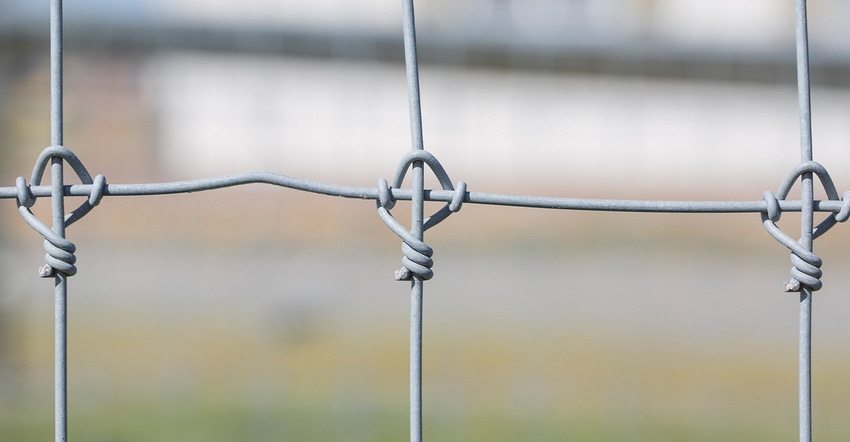December 27, 2019

Fence. Miles and miles of fence. This is what Steven Sarson sees when he drives through rural America. “Sometimes it is very satisfying and sometimes it makes me cringe,” says Sarson, a Bekaert fencing pro and regional sales manager. He has worked in the fencing industry for more than two decades. Bekaert develops and manufactures fencing products for agriculture.
“Sometimes I see a well-built fence,” he says, “and sometimes I look at new installations and think, ‘That isn’t how I would build it and hope they didn’t pay a lot for it.’”
How do you build a great fence? Sarson’s tips include:
1. Buy the right materials. Before purchasing fencing supplies, take some time to consider the fence’s purpose. What type of livestock will it be keeping in? What type of wildlife will it be keeping out? What will the stocking densities be? “Depending on stocking densities, a fence is either a physical barrier or a boundary,” he says. The answers to these questions help determine fencing materials and design.
2. Build a good brace. The brace, Sarson says, “is the heart and soul of the fence.” If a brace is built incorrectly, it doesn’t matter the quality of materials or skill applied to installing the rest of the fence. If the brace fails, the fence fails. A well-built brace can absorb 6,000-pounds of pressure.
3. Use round, not square wood posts. Round posts, with all the growth rings in-tact, have the strength of the tree. “Those growth rings that make that tree stand strong, will do the same for the fence. A round post is basically a full tree treated,” Sarson says. Square posts are susceptible to rot and are not as strong because they are either made of heartwood, which will not absorb treatment or include only partial growth rings. Depending on terrain, availability and preference welded pipe braces are also a viable option.
4. Use brace pins to hold the brace together. Go with brace pins instead of notching the wood.
5. Use high tensile strength. Tensile strength increases the longevity of a fence and reduces cost per foot. The greater the tensile strength, the smaller the gauge, lighter weight and more flexible the steel, which reduces cost per roll, risk of sag and number of fence posts needed to complete the project.
6. Get the ratio right. Use one round wood post to every four T-posts.
7. Space posts properly. The distance between posts can vary depending on stocking density, terrain and type of fence. However, every dip and rise needs a post. Fastening high spots first makes it easier to achieve adequate tension.
8. Never hard-staple the wire. Leave enough room between the staple and the post so that the wire can move freely. This allows the wire to flex if an animal pushes against the fence and reduces the risk of sag and applies pressure to the brace instead of the post.
Source: Bekaert, which is solely responsible for the information provided and is wholly owned by the source. Informa Business Media and all its subsidiaries are not responsible for any of the content contained in this information asset.
You May Also Like




